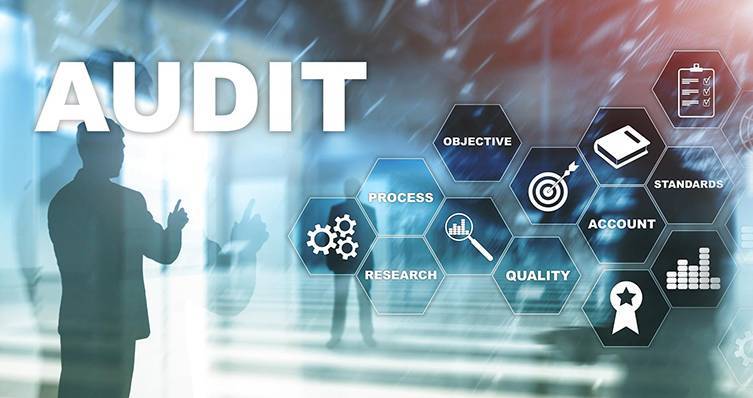
Company management is ultimately responsible for preparing its financial statements, including the identification of related parties. However, during fieldwork, external auditors look for undisclosed related parties and scrutinize significant unusual transactions. Here’s an overview of the nature of related-party financial relationships and transactions, as well as potential risks associated with them. Auditing standards require auditors to design their inquiries and testing procedures to address these risks.
What are related parties?
The term “related parties” is often associated with family-owned businesses that have family members on the payroll. While closely held business often engage in related-party transactions, public and large private companies also may have related-party arrangements, such as those involving directors, executives, and their family members and friends. Additionally, larger organizations might engage in transactions involving commonly controlled entities, such as subsidiaries and variable interest entities.
In recent years, the Public Company Accounting Oversight Board (PCAOB) has issued guidance to enhance auditors’ efforts in financial statement matters that pose an increased risk of misstatement. The PCAOB warns that related-party arrangements increase the risks of fraud and legal violations, warranting increased attention for companies of all sizes.
To the extent that material related-party transactions aren’t disclosed or don’t happen at arm’s length — meaning at market value — a company that engages in them could misstate its financial results and potentially mislead lenders, investors, and other stakeholders. For example, a company might artificially boost its profits by paying below-market rent to a subsidiary. Or a dishonest CFO might pay consulting fees to her nephew to divert money from her employer.
Auditing standards require auditors to evaluate related-party risks and take steps to identify them during an audit. Companies are required to disclose these relationships and transactions in the footnotes to their audited financial statements.
How auditors identify them
During fieldwork, auditors ask targeted questions to obtain an in-depth understanding of related-party financial relationships and transactions, including their nature, terms, and business purpose (or lack thereof). Tougher related-party audit procedures will be performed in conjunction with the auditor’s risk assessment procedures, which occur in the planning phase of an audit.
Examples of information that may be gathered during the audit that could reveal undisclosed related parties include:
- Disclosures contained on the company’s website
- Confirmation responses, correspondence, and invoices from the company’s attorneys
- Tax filings
- Life insurance policies purchased by the company
- Contracts or other agreements
- Corporate organization charts
- Public company proxy statements
Certain types of transactions — such as contracts for below-market goods or services, bill-and-hold arrangements, uncollateralized loans, and subsequent repurchase of goods sold — also might signal that a company is engaged in unusual or undisclosed related-party transactions. Auditors may inquire about significant unusual transactions that are outside the company’s normal course of business or that otherwise appear to be unusual due to their timing, size, or nature.
In some cases, auditors identify related-party arrangements that haven’t even been disclosed to management. To help identify friends and relatives involved in the business, consider implementing a conflict-of-interest policy. These policies typically require employees, suppliers, and new customers to complete an annual disclosure statement on which they list the names and addresses of their family members, their family’s employers, and business interests — and whether they have an interest in those entities.
Transparency is key
Not all related-party transactions are suspect, of course. For example, some of the world’s largest and most successful companies are run by families. Family-owned businesses aren’t usually run like large public companies, and working together can bring out the best and worst in families.
Here are key questions management can expect from their CPA when auditing these entities:
Are family members on the payroll? Although some business owners hire family members because they’re perceived as more trustworthy, many hire them out of obligation or to satisfy a desire to pass the business on to their offspring. It’s important for auditors to objectively consider whether family members are qualified for their positions and whether their compensation is reasonable. However, the reverse also may be true. Some family businesses overwork or underpay related parties. Consider, for example, business owners whose passion for their work and desire to succeed lead them to work exceptionally long hours.
When evaluating a related party’s compensation, auditors look beyond the family member’s base pay. For example, they must also consider benefits and extraneous perks. Perks may include such things as allowances for luxury vehicles, country club memberships or loans at below-market interest rates.
Are there other related-party transactions? Family-owned businesses may engage in other transactions with family members, such as rental contracts, supply agreements and related-party loans. It’s critical for auditors to inquire whether these transactions exist and are at arm’s length.
Is the management style casual or formal? Family business owners tend to have a more personal management style that favors gut instinct and trust over formal written policies. Many family business owners also favor conservative business strategies and nonfinancial goals, which often lead to slower growth and lower profits.
From an auditor’s perspective, the lax management style that characterizes many family businesses can lead to weak internal control systems — and even fraud. For instance, unscrupulous family members with a sense of entitlement might take advantage of generous older relatives. Likewise, weak internal controls and relaxed management styles provide opportunities for dishonest relatives to “borrow” assets or exaggerate timesheets. Auditors factor these concerns into their risk assessments and design audit procedures to account for any additional risks.
© 2023 KraftCPAs PLLC